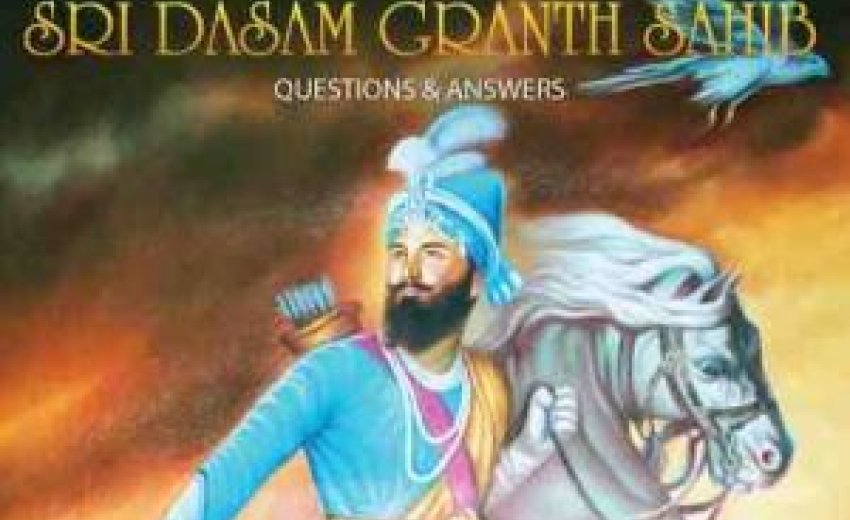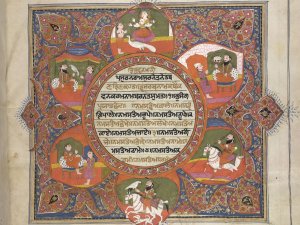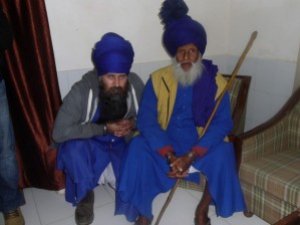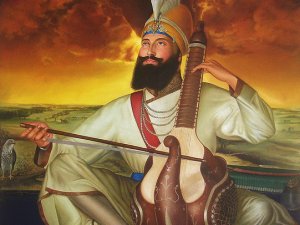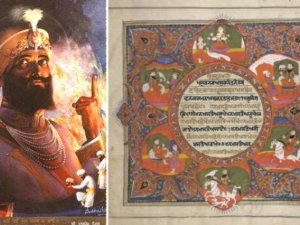released Thursday, August 18, 2011
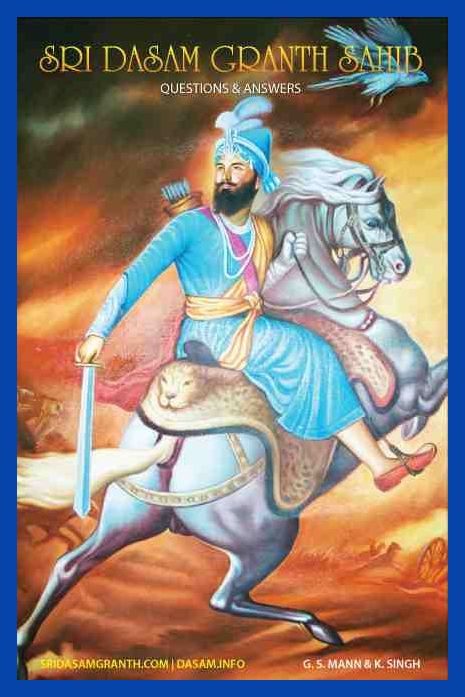 |
Title : Sri Dasam Granth Sahib: Questions and |
-A new book on the Sri Dasam Granth Sahib reveals not only more about the history and compilation of this Sikh scripture but also shows rare images of the earliest manuscripts of the Granth.
-The Q and A book reveals the purpose and reasoning behind why Guru Gobind Singh created a complimentary scripture to the Guru Granth Sahib.
-The book was presented to the Jathedars of the Five Takhts in the UK, on 18th May 2011.
-Review:
After going through this book I felt it is first attempt in English to solve many riddles created by some critics/mischief-mongers against Sri Dasam Granth Sahib. English readers will find it easy to delve deep now into the spirit of this mysterious granth.
Message of Sri Guru Granth Sahib is simple, straight and clear: remember God, recite name, do good deeds to achieve salvation. This message is common to all religions, all traditions. A Sikh can never disrespect Islam/Hinduism, for baani if Baba Farid and Bhagats is present in SGGS. There are two major traditions, Indian and Semitic. Bhai Bala and Bhai Mardana following Guru Nanak Dev is the same symbol, two traditions following Guru Nanak. We find most innocent world in SGGS.
But characters, incidents and consequences of Dasam Granth are highly complex, charged, multidimensional, dangerous, unexpected and wonderful, therefore, some scholars analyze it as poetry of politics. In history, followers of Krishan (Hill rajas) are supporting Moghals against Khalsa Panth, in Dasam Granth Moghals are supporting Krishan against Kharag Singh. The message of Dasam Patshah is that Hindus have forgotton sacrifice made by Guru Tegh Bahadur Sahib to protect their tilak and janju. Men and women of frail, dubious characters are exhibited to show how dangerous life becomes when one leaves the true path of dharma.
Only those questions are answered which often baffle the common Sikh folk. In my youth I couldn’t understand what was the need of scribing his past life by Guru Gobind Singh as Apni Katha in Bachittar Natak, i.e. meditating at Hemkunt? Problem got solved when I read Milinda Prasna(Questions of King Milinda, 1st century AD Bodh classical text). At the beginning of the grantha, Nagsen, the hero monk writes his Pub Katha(pub means previous, katha, story i.e. story of his previous birth). In his Pub Katha he explains purpose of writing this grantha. This was the tradition of the time to indicate purpose of writing the text. Similarly Guru Gobind Singh explains purpose of his coming in this mundane world-:
Ham ih kaaj jagat mo aey.
Dharam hetu gurdev pathaey.
etc… etc…There are 17 illustrations, 4 hukamnamas of Sri Akal Takhat Sahib and a table of compositions of Dasam Granth. 127 end notes and references make the book most authentic document. I strongly recommend readers to go through it to get information about Dasam Granth updated.
(Harpal Singh Pannu, Dr.)
Professor & Head, Religious Studies,
Punjabi University, Patiala, Punjab, India.
_______________________________
The warrior-poet of the Sikhs, Guru Gobind Singh, who was adept in several Indic languages, would put his linguistic skills to good use in his writings: the Dasam Patshah Ka Granth. The term Dasam Granth would become well-known in the late 19th century. The book tells the story of this Sikh scripture, from the Court of the Guru through to how the Granth is still revered to this day. Certain elements from within the religion, have faced difficulties in understanding the context of when and for what purpose the Granth was written. As a result confusion and misunderstandings have crept in without any redress from Sikh scholars.
Two Sikh scholars, Gurinder Singh Mann and Kamalroop Singh, both from the UK have spent many years searching for the historical basis of the Granth, the earliest manuscripts, and the praxis of the Tenth Guru's Granth. Gurinder started researching Sikhism and particularly this scripture as early as 1997 as part of his MA, and his essays and presentations have been quoted and are widely recognized as some of the best work in the field of Dasam Granth studies. Kamalroop's revolutionary Phd has given the first account (complete account) of how Dasam Granth was formed. He has discovered unknown manuscripts together with important secondary sources about the Dasam Granth as well giving lectures around the world.
Their combined expertise in the field of Dasam Granth studies is shown in the Q and A book. They answer 50 common questions that have been repeatedly asked about Guru Gobind Singh's Granth. These include the following:
-When was Dasam Granth written?
-What is the link between Gatka/Shastarvidyia and the Dasam Granth?
-Are there any handwritten pages by Guru Gobind Singh?
-Does any 18th century source claim there was any controversy over the Dasam Granth?
The two scholars have listed and examined some of the earliest manuscripts of the Dasam and revealed some unknown manuscripts for the first time. Of particular interest to readers should be the discussion of the first manuscript of the Dasam Granth known as the Anandpuri Bir (1695/1696). The back cover of the book has a painting of the Tenth Guru. This painting is taken from the Anandpuri Bir and is a rare authentic depiction of Guru Gobind Singh in courtly regalia. Other rare manuscripts include: the Patna Sahib, Bhai Mani Singh, Baba Deep Singh, Bhai Daya Singh and the Akal Takht manuscripts.
The book also sheds more light on the link between Bhai Shia Singh, Bhai Mani Singh and Mata Sundri, and the compilation of Bhai Mani Singh’s recension of the Dasam Granth. The issue of the ceremonial reading of both the Guru Granth Sahib and Dasam Granth is assessed by citing historical instances of this practice. Furthermore, the authors, after considering many sources of Sikh history which prove the importance of Guru Granth Sahib, show that they are in fact the same ones that confirm the significance of the Dasam Granth. This highlights the contradictions, lack of scholarly skills, and even distortions which have been created to diminish the importance of the Tenth Guru's Granth.
This book is an invaluable guide to gaining a thorough understanding of the Sikh scripture in an easy and interesting way. The book is released by Archimedes Press in the UK on 15 August 2011. It is available online and be available for sale in other countries in the forthcoming months.
Preview the book & Buy now at: www.archimedespress.co.uk
Author information:
Gurinder Singh Mann www.gsmann.com
Kamalroop Singh: http://kamalroopsingh.blogspot.com/
View the video below:
Sri Dasam Granth Sahib: Questions and Answers from sridasamgranth on Vimeo.

